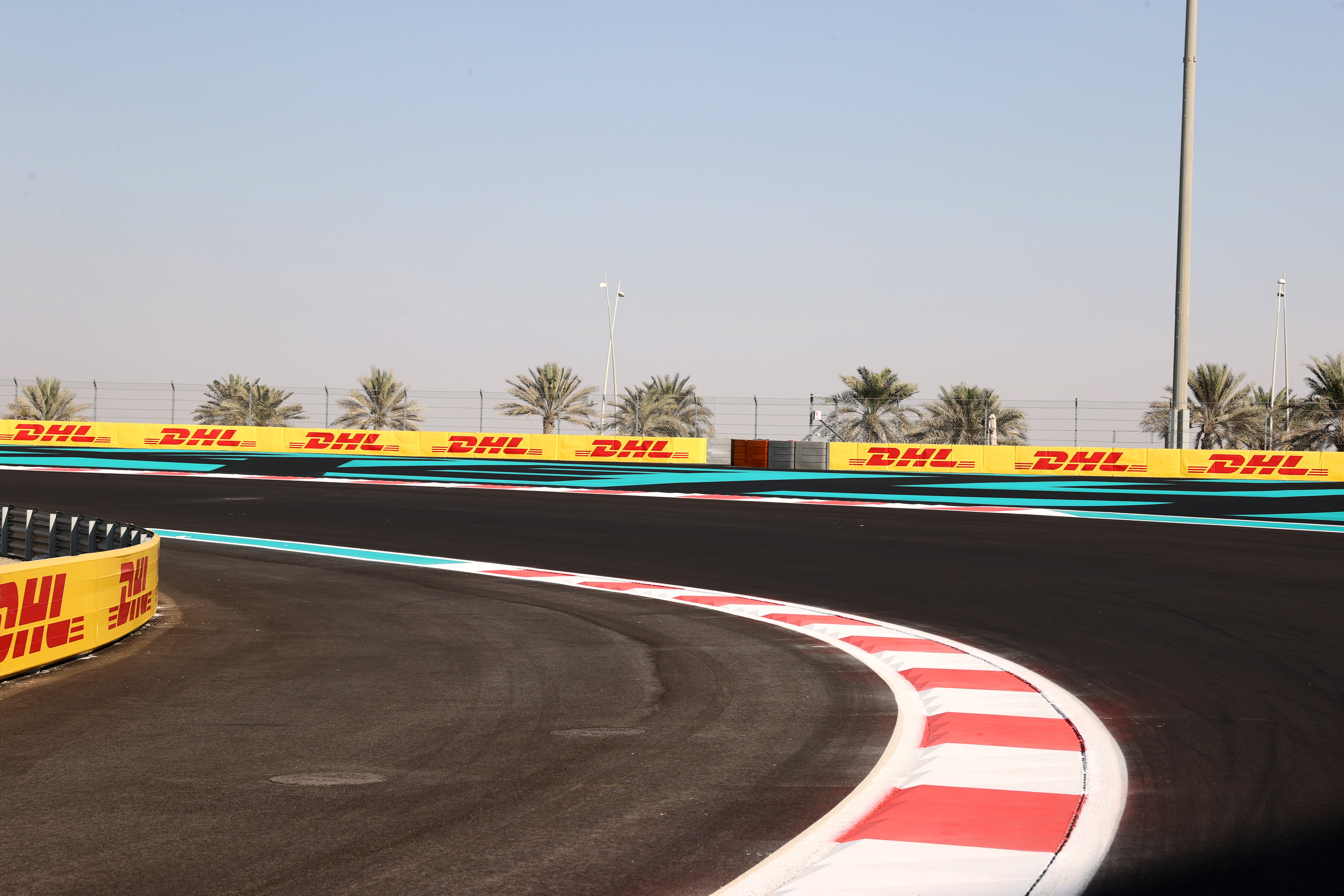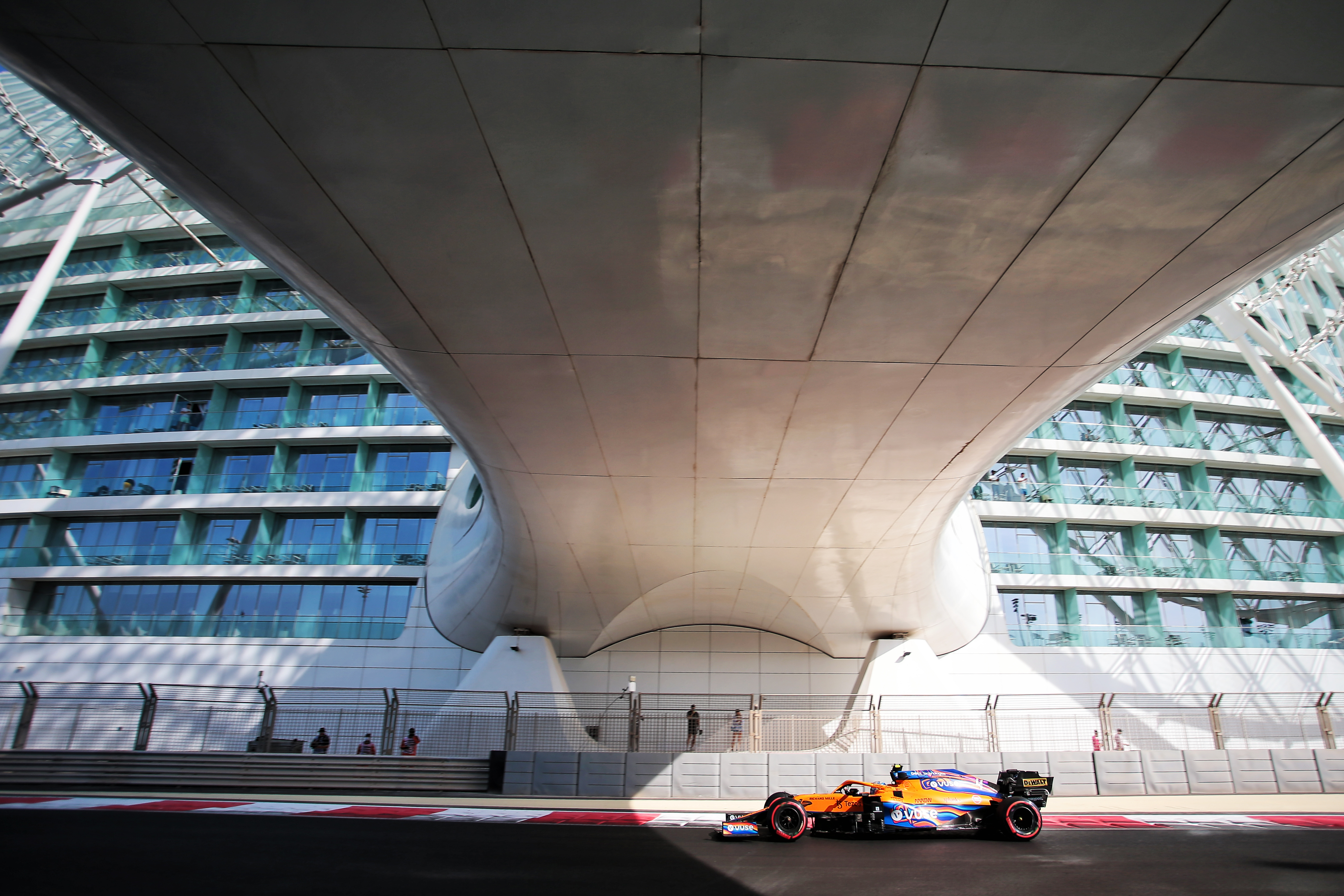Why new Abu Dhabi kerbs made Pirelli concerned
The FIA made changes to some of the ‘pyramid’ exit kerbs in the modified parts of the Yas Marina circuit ahead of the Abu Dhabi Grand Prix after Pirelli raised concerns

The FIA made changes to some of the ‘pyramid’ exit kerbs in the modified parts of the Yas Marina circuit ahead of the Abu Dhabi Grand Prix after Pirelli raised concerns.
The new kerbs are close in design to those at the Losail International Circuit, which led to a series of failures during the Qatar GP.
Mario Isola, Pirelli’s head of F1, describes the kerbs as “very similar” to those that caused tyre failures for Lando Norris, Valtteri Bottas and the Williams drivers in Qatar. These cost Norris a potential top-five finish and Bottas a likely third place.
Pirelli’s concern is the exit kerbs in the modified sections of the track at the exit of the Turn 5 hairpin and banked Turn 9 left-hander in particular, as well as for Turns 12-15. The exit kerbs in the rest of the track remain the same as last year.
Isola had discussions with FIA race director Michael Masi about the kerbs on Thursday, then a follow-up on Friday night.
Subsequently some grinding of the kerbs at Turns 5 and 9 took place, though the Turn 12-15 section has not been adjusted.
While Isola did not believe the problem will be as severe as it was in Qatar given the different track configurations, but was keen to explore what possibilities existed to modify the kerbs on a precautionary basis.
“They are very similar, they are not exactly the same,” said Isola when asked about the kerbs.

“They are quite aggressive, especially at the exit of Turn 5 and Turn 9.
“I’m currently in discussion with the FIA to see if there is any potential solution to that.
“We have a different situation compared to Qatar. It’s a different speed, it’s a different time that they are on the kerb, but it is something that we have to consider and pay attention to.
“After free practice, we collected the tyres used in the sessions and we are analysing them.
“The problem is, we don’t have tyres with the number of laps comparable to the length of a stint during the race.
“We can increase the number of checks that we do. But sometimes, like it was in Qatar, it’s not possible to predict what happens to the construction of the tyre because it happened after several laps and there’s not enough running in free practice to understand that.”
While during the race at Qatar, which produced a mix of one and two-stop races, drivers were consistently running the kerbs, the Yas Marina circuit doesn’t require so much abuse of the exit kerbs at fast corners.
Isola pointed to the medium-fast Turn 9 left-hander as the biggest area of concern given this is a high speed corner that rewards running the exit kerb with drivers both in Formula 1 practice and F2 being aggressive at the exit.
“I don’t know what is possible to do now,” said Isola when asked by The Race how worried he was about the problem before the kerb changes were made.

“What we have to do is analyse the tyres to try to understand if there is a potential area of concern and analyse the data from teams and compare that to the level of stress that we saw in Qatar.”
The left-front tyre failures in Qatar were not result of production problems, with the cause instead being traced to the combination of aggressive kerbs and high lateral loads.
Norris’s tyre was key to discovering this given he got it back to the McLaren garage still largely intact despite the loss of air.
Drivers were able to run over these kerbs at corner exit in Qatar, then bring the car back across them. By going beyond the kerb then back, cuts were created on the inside sidewall, which were found to be the original of the failures.
“In Qatar, the corners were different and we saw during free practice [in Abu Dhabi] they were not going beyond the kerb and back, so probably this effect is not something that is going to happen here,” said Isola when asked by The Race if drivers would cross and recross the kerbs in the same way at Yas Marina.
“But running over the kerbs is something that is going to happen.”
It’s important not to overstate the seriousness of the problem and the evidence of today suggests that the pyramid kerbs will not cause the same problem as they did in Qatar. But as Isola says “my job is to highlight any potential area of concern”.
Given it won’t be until the race that drivers complete full stints, it will be Sunday before it’s clear whether Pirelli’s concerns were founded or whether the kerb tweaks on Friday night resolved them.




